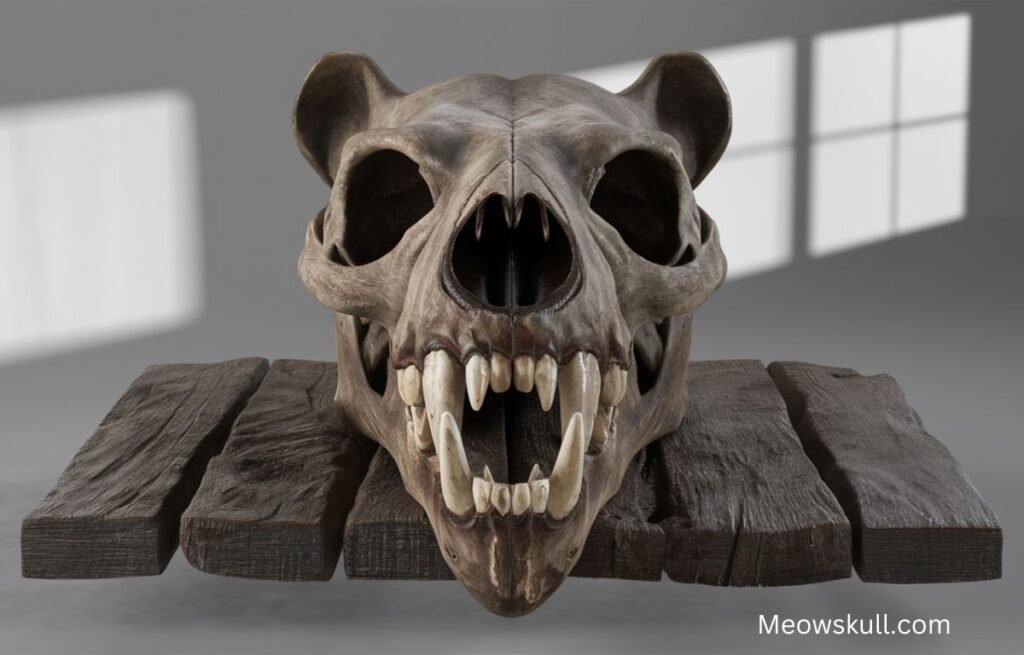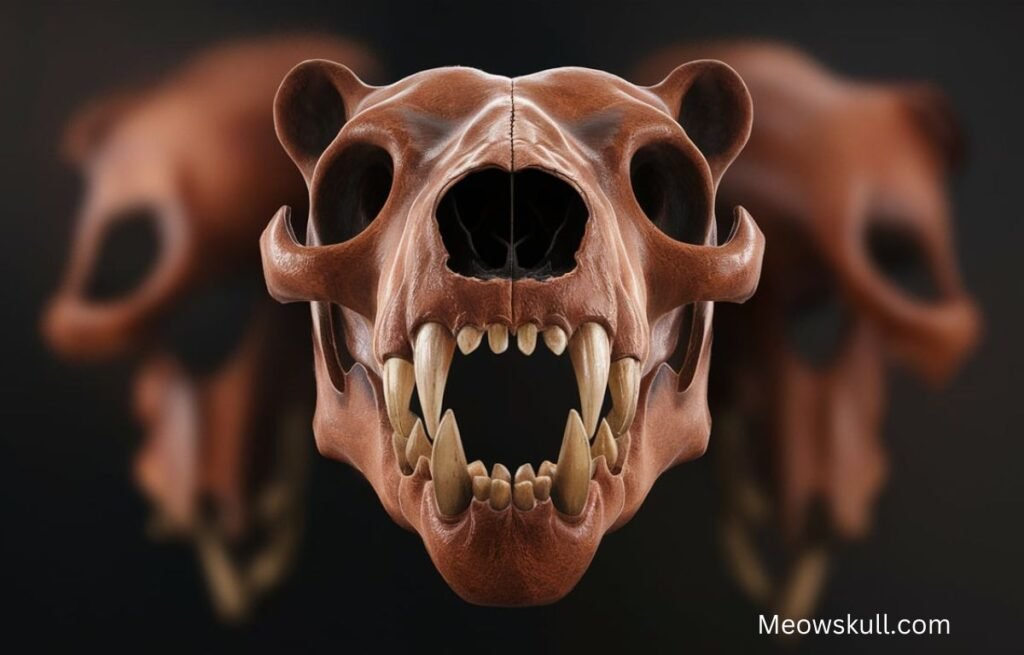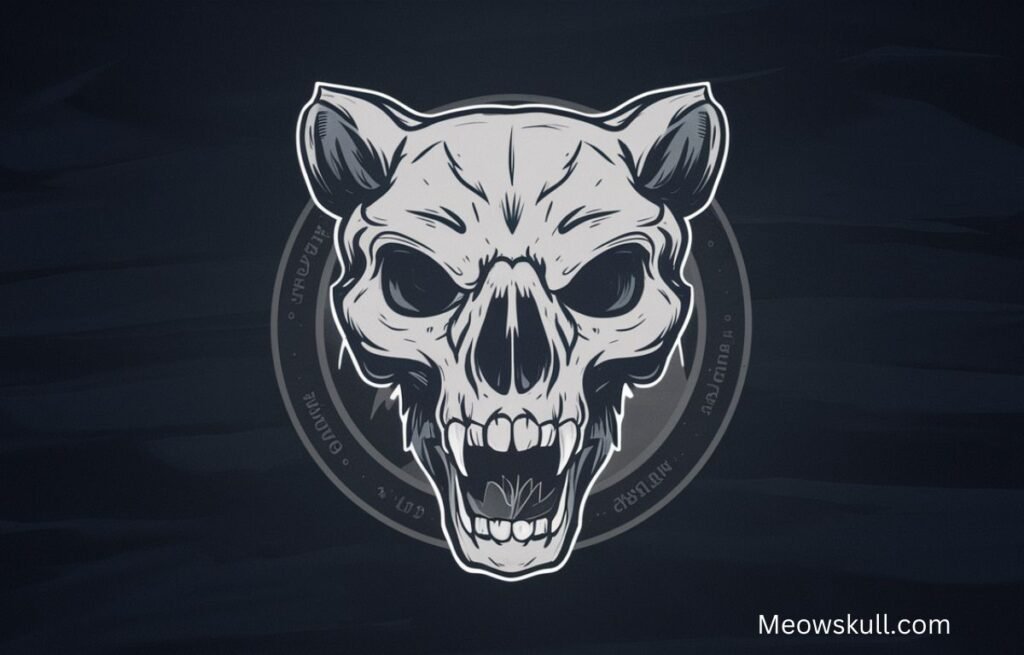The bear skull is a remarkable and intriguing aspect of the animal’s anatomy, offering insights into the life and evolution of one of nature’s most powerful creatures. Whether you’re a wildlife enthusiast, a paleontologist, or someone simply fascinated by the natural world, understanding the structure, function, and significance of a bear skull can open up a whole new perspective on these magnificent animals.
In this comprehensive guide, we’ll dive deep into the world of bear skulls, exploring their unique characteristics, variations among different bear species, and the role they play in the animal kingdom. We’ll also touch on the historical and cultural significance of bear skulls, providing you with a rich understanding of why these structures are so much more than just bones.
The Anatomy of a Bear Skull
A bear skull is more than just a collection of bones; it is a complex structure that serves multiple vital functions. The skull is composed of several bones that are fused together, forming a protective casing around the brain. The jawbones are powerful and robust, designed to crush bones and tear flesh, reflecting the bear’s omnivorous diet.
Key Features of a Bear Skull
- Cranial Structure: The cranium of a bear is large and robust, designed to protect one of the largest brains relative to body size in the animal kingdom. This large cranium is essential for housing the bear’s highly developed sense of smell, which is vital for survival.
- Teeth: Bears have a diverse set of teeth that are adapted for an omnivorous diet. The large canines are used for tearing meat, while the molars are more flat and designed for grinding plant material.
- Zygomatic Arches: These are the bones that form the cheekbones and provide attachment points for the jaw muscles. The zygomatic arches are particularly pronounced in bears, giving them the strength needed to exert immense pressure when biting.
- Nasal Cavity: The nasal cavity in a bear skull is highly developed, with a large surface area that supports their incredible sense of smell. This allows bears to detect scents from miles away, which is crucial for locating food and sensing danger.
- Mandible: The lower jaw, or mandible, is a powerful bone that works in tandem with the upper jaw to create a strong bite force. The mandible of a bear is especially large and sturdy, reflecting the animal’s need to crush bones and tough plant material.
Also Read: Raccoon Skull: Anatomy, Uses, and Care
Variations Among Different Bear Species

Not all bear skulls are created equal. Different bear species have evolved unique skull characteristics that reflect their specific diets, habitats, and lifestyles. Let’s take a closer look at how bear skulls vary among species.
Grizzly Bear Skull
The grizzly bear is one of the most iconic bear species, and its skull reflects its powerful predatory capabilities. Grizzly bear skulls are large, with a broad, rounded cranium and a pronounced sagittal crest where strong jaw muscles attach. The teeth are adapted for a mixed diet, with sharp canines for meat and flat molars for grinding vegetation.
Polar Bear Skull
The polar bear has a skull that is slightly elongated compared to other bear species. This elongation is an adaptation to its Arctic environment, allowing the polar bear to hunt seals effectively. The nasal bones are longer, supporting the bear’s enhanced sense of smell, which is critical for detecting prey beneath the ice.
Black Bear Skull
The black bear has a smaller skull compared to grizzlies and polar bears, but it is still robust and well-suited to its omnivorous diet. Black bear skulls have a less pronounced sagittal crest and smaller canines, reflecting their diet, which consists largely of plant material.
Panda Bear Skull
Although not a true bear, the panda bear has a skull that is worth mentioning. The panda’s skull is highly specialized for a diet of bamboo, with large, flat molars and powerful jaw muscles. The sagittal crest is well-developed, providing the necessary muscle attachment points for crushing tough bamboo stalks.
The Evolution of Bear Skulls
Bear skulls have evolved over millions of years, with each species adapting to its environment and dietary needs. The evolution of bear skulls is a fascinating story of survival, showcasing the adaptability and resilience of these creatures.
Early Bear Ancestors
The earliest bear ancestors, known as Miacids, lived around 30 million years ago. These small, carnivorous mammals had skulls that were more similar to those of modern-day dogs than bears. Over time, as these creatures evolved and diversified, their skulls began to change, reflecting shifts in diet and behavior.
The Rise of the Ursidae Family
Around 20 million years ago, the Ursidae family began to emerge, marking the evolution of true bears. Early members of this family, such as the Amphicyonidae (also known as “bear-dogs”), had skulls that were intermediate between those of bears and dogs, with a mix of carnivorous and omnivorous features.
Modern Bear Skull Adaptations
As bears spread across the globe and adapted to different environments, their skulls continued to evolve. The development of powerful jaws, large craniums, and diverse teeth allowed bears to become successful predators and foragers. The variety of skull shapes and sizes seen in modern bears is a testament to their evolutionary success.
Also Read: Cow Skull: Symbolism, Decor, and Care Guide
The Functionality of a Bear Skull

The bear skull is not just a protective casing for the brain; it plays several critical roles in the animal’s daily life. From feeding to communication, the skull is central to a bear’s ability to thrive in its environment.
Feeding and Foraging
Bears are opportunistic feeders, and their skulls reflect this versatility. The powerful jaws and sharp teeth allow bears to consume a wide range of food, from meat to berries to fish. The structure of the skull supports the bear’s ability to generate significant bite force, enabling them to crush bones and tough plant materials.
Sensory Capabilities
The bear’s skull houses several key sensory organs, including the eyes, ears, and nose. The large nasal cavity and associated structures support the bear’s incredible sense of smell, which is one of the most developed of any land mammal. This sense of smell is crucial for locating food, identifying mates, and detecting predators.
Communication and Social Interaction
Bears use their skulls for more than just feeding and sensing; they also play a role in communication. The shape and size of the skull, along with the positioning of the eyes and ears, can convey information to other bears. For example, a bear might display its teeth or make certain facial expressions to assert dominance or ward off threats.
Cultural and Historical Significance of Bear Skulls
Bear skulls have been revered and utilized by various human cultures throughout history. From ancient rituals to modern-day symbolism, bear skulls have held a special place in human culture.
Bear Skulls in Ancient Cultures
In many ancient cultures, bear skulls were considered sacred and were often used in rituals and ceremonies. The Neolithic peoples of Europe, for example, placed bear skulls in special alcoves within their dwellings, possibly as a form of worship or reverence. In Native American cultures, bear skulls were often used in healing rituals, symbolizing strength and protection.
The Symbolism of Bear Skulls
In modern times, bear skulls continue to be powerful symbols. They are often associated with strength, courage, and resilience, reflecting the bear’s status as a formidable predator. Some people also view bear skulls as symbols of death and the afterlife, given their role in protecting the brain, the seat of thought and consciousness.
Bear Skulls in Art and Media
Bear skulls have also made their way into art and popular culture. They are often depicted in paintings, sculptures, and tattoos, symbolizing the raw power and untamed nature of the wild. In some cultures, bear skulls are even used as motifs in jewelry and clothing, serving as reminders of the wearer’s connection to nature.
Also Read: Skull Caps: A Complete Guide to Choosing and Wearing
Conservation and the Study of Bear Skulls

The study of bear skulls is not just about understanding the past; it also plays a critical role in conservation efforts. By studying bear skulls, scientists can gain insights into the health and well-being of bear populations, helping to inform conservation strategies.
The Role of Bear Skulls in Conservation
Bear skulls can provide valuable information about the diet, health, and behavior of bear populations. For example, scientists can examine the wear patterns on teeth to determine what bears are eating and how their diets may be changing in response to environmental pressures. Similarly, the size and shape of bear skulls can provide clues about the genetic diversity and overall health of bear populations.
Protecting Bear Populations
As human activity continues to encroach on bear habitats, conservation efforts have become increasingly important. Understanding the biology and ecology of bears, including their skulls, is essential for developing effective conservation strategies. By protecting bear populations, we also preserve the ecosystems they inhabit, ensuring that these majestic animals continue to thrive for generations to come.
How to Identify a Bear Skull
Identifying a bear skull can be challenging, especially for those who are not familiar with the nuances of animal anatomy. However, there are certain features that can help distinguish a bear skull from other animal skulls.
Key Identifying Features
- Size and Robustness: Bear skulls are typically large and robust, with a broad cranium and strong jawbones.
- Teeth: The presence of large canines and flat molars is a key indicator of a bear skull. The teeth are often well-worn, reflecting the bear’s diverse diet.
- Sagittal Crest:
Conclusion
Bear skulls are not merely anatomical structures but are windows into the lives and evolutionary paths of these remarkable animals. By exploring their anatomy, variations, and cultural significance, we gain a richer understanding of the role’s bears play in nature and human culture. Through continued study and conservation efforts, we can ensure that these majestic creatures continue to thrive in the wild.
FAQs
What is the main function of a bear skull?
The primary function of a bear skull is to protect the brain and support the sensory organs, such as the eyes, ears, and nose. Additionally, the skull plays a crucial role in feeding, housing strong jaws and teeth that allow bears to process a wide variety of foods, from meat to plant material.
How do bear skulls differ between species?
Bear skulls differ among species in size, shape, and features, reflecting their specific diets and habitats. For example, grizzly bears have large, robust skulls with pronounced sagittal crests for powerful jaw muscles, while polar bears have elongated skulls adapted for hunting seals. Each species’ skull has evolved to meet its unique environmental and dietary needs.
Why are bear skulls important for understanding evolution?
Bear skulls provide valuable insights into the evolutionary history of bears, showing how different species have adapted to their environments over millions of years. By studying skull shapes, sizes, and structures, scientists can trace the development of bears from their early ancestors to the diverse species we see today.
How can you identify a bear skull?
To identify a bear skull, look for key characteristics such as its large size, robust construction, presence of large canines, and flat molars. The sagittal crest on the top of the skull, where jaw muscles attach, is also a distinctive feature in many bear species. These features distinguish bear skulls from those of other animals.
What role do bear skulls play in cultural practices?
Throughout history, bear skulls have been used in various cultural practices, symbolizing strength, protection, and spiritual power. In some ancient cultures, bear skulls were used in rituals and ceremonies, while in modern times, they continue to represent resilience and connection to nature in art and symbolism.
Are bear skulls used in modern scientific research?
Yes, bear skulls are used in modern scientific research to study bear behavior, diet, and population health. By examining skulls, researchers can gather information about how bears are adapting to changing environments, which is crucial for developing conservation strategies.
Can a bear’s diet be determined by examining its skull?
Yes, a bear’s diet can often be inferred by examining its skull, particularly its teeth. The wear patterns on the teeth, the size of the canines, and the shape of the molars provide clues about the types of food the bear consumed. For example, flat molars indicate a diet that includes a significant amount of plant material, while large canines suggest meat consumption.
What is the significance of the sagittal crest in bear skulls?
The sagittal crest is a ridge of bone that runs along the top of the skull, providing an attachment point for the powerful jaw muscles. This feature is particularly pronounced in species like the grizzly bear, where strong jaw muscles are essential for processing tough food items like bones and large prey.
How do bear skulls contribute to conservation efforts?
Bear skulls contribute to conservation efforts by providing important data about bear populations. By studying skulls, scientists can assess the health, diet, and genetic diversity of bears, which helps inform conservation strategies aimed at protecting these animals and their habitats.
What can a bear skull tell us about the animal’s behavior?
A bear skull can reveal much about the animal’s behavior, particularly its feeding habits. The shape and wear of the teeth can indicate whether the bear primarily ate meat, plants, or a combination of both. Additionally, the size and robustness of the skull can provide clues about the bear’s role in its ecosystem, such as whether it was a dominant predator or more of a scavenger.

As a seasoned contributor to “Meowskull”, Rosalie combines her linguistic prowess with a keen understanding of various topics, ensuring a delightful and informative reading experience. Her articles effortlessly blend clarity, creativity, and a touch of elegance, making language exploration an exciting journey for readers.